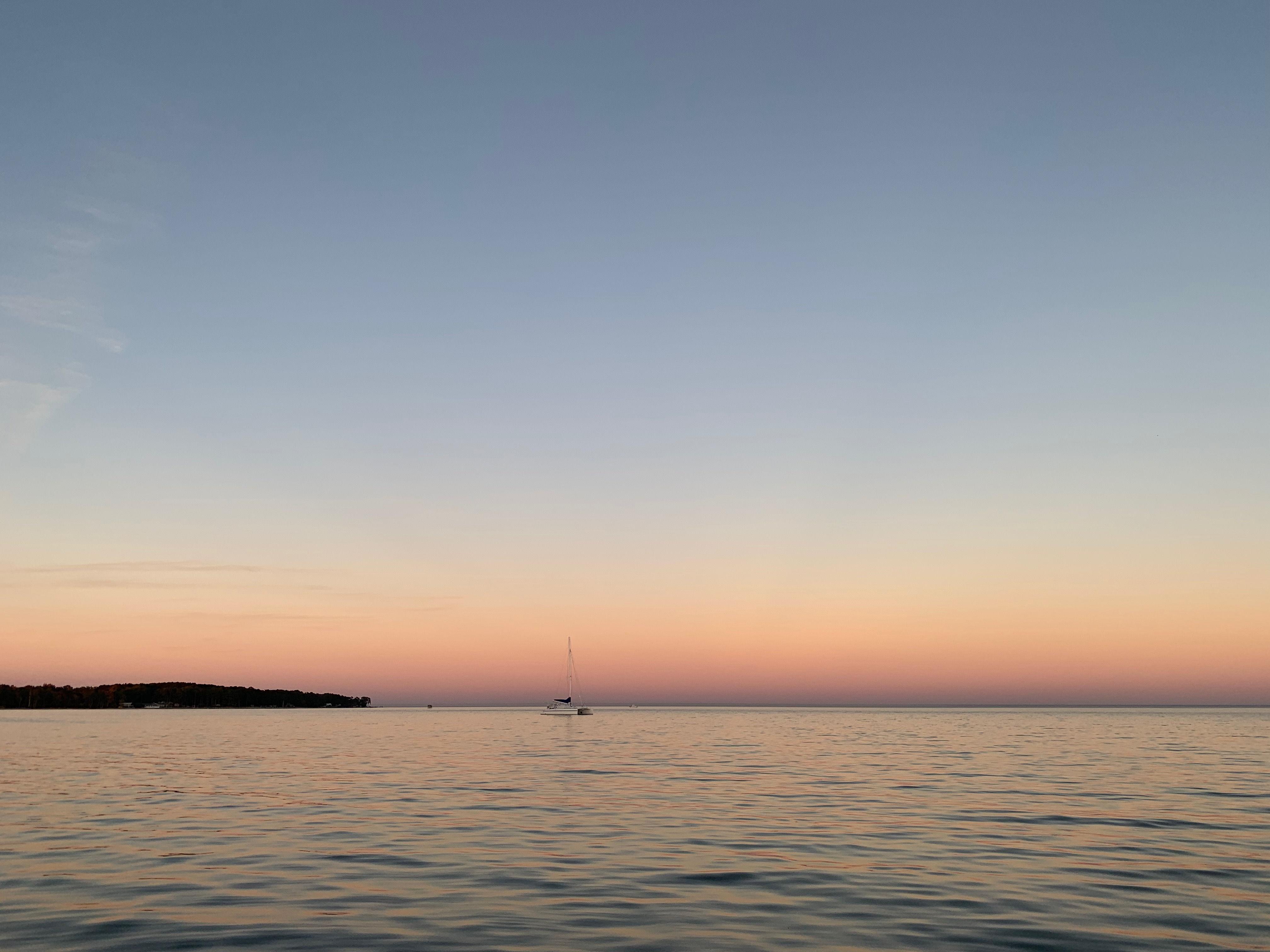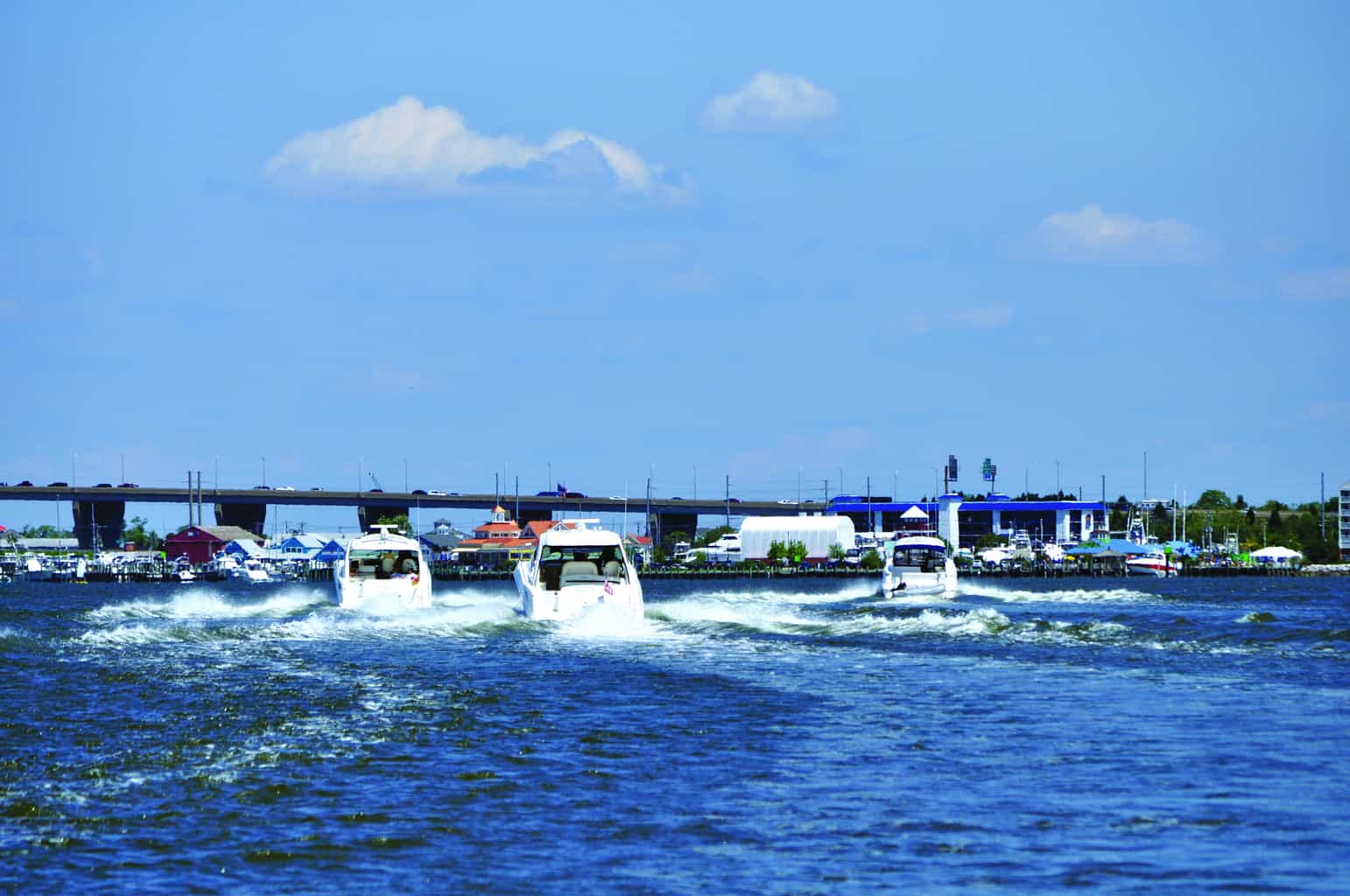Why we choose an iffy anchorage
The most seductive phrase in boating may well be “under the right circumstances,” as in, “Under the right circumstances, you can sail from Rock Hall to Deltaville on a single tack.” Yes, you can, but most of us will never live to see the day. Usually, however, this qualifying phrase is used to describe anchorages. “This is a very good anchorage under the right circumstances,” somebody or other will write. This almost always means it’s very good only in a dead calm and absent any boat traffic. In any case, within these four words lie nearly infinite possibilities for making a flawed decision. I speak from experience, of course; so much experience that I have broken down the psychology of the thing into three categories of decision-making: sheer laziness, necessity, and voluntary disregard for “right.” So, let’s begin.
Let us say, for example, that you are heading down the Bay on your way to a long weekend in Hampton, Cape Charles, or some similarly lovely place. You’ve been plugging away at it all day and are crossing the Rappahannock River just as the sun is slipping behind Virginia’s Middle Neck. Time for a decision. The logical action at this point would be to scoot into Deltaville, either up Broad Creek or around Stingray Point and into Jackson Creek for a nice quiet anchorage. So, what do you do? Well, either of those two is good. But what if you’re tired and just don’t feel like going that far? The last time I found myself in this position, which was last November, I took the easy way out, which was to head for a spot described by someone as an “adequate anchorage under the right circumstances.” This simply involved coming into the Piankatank River and then getting as close to the eastern shore of Stove Point Neck as depth would allow. Having reached this point, I crossed my fingers and dropped the anchor (after sounding first, of course—I’m lazy, not stupid). It was the kind of spot we cruising-guide writers call a roadside anchorage: easy and convenient, good under the right circumstances—say, very light winds and little boat traffic. To be fair, I thought I was close to “right” in this case because the NOAA forecast was for the afternoon’s 10-knot west winds to diminish overnight to 5. Which, course, is not what happened. At 2 a.m., the wind clocked around to the northeast and piped up to 10-gusting-15 kts. Not a gale, certainly, or even a small craft warning, but with a fetch from Saxis to Deltaville of 37 nautical miles, it was enough to make life very bobbly and to give me a lee shore a mere 0.1 nautical miles away. By 4 a.m. I’d had enough, and by 5 I had the anchor up and was slaloming through the crab pots to get back to the Bay. Lesson learned? Of course not.

Now we come to necessity. And here, I feel, many of you could cite your own examples. Sometimes we all just have to make the best of an uncomfortable situation, right conditions be damned. Tides, currents, winds, crab pots, sudden squalls . . . these can all play a part in forcing us to choose that iffy anchorage as the best solution.
Naturally, I have an example handy—a trip up Delaware Bay early last fall. Yes, I know, Delaware Bay and iffy are practically synonymous, but in this case, a late start out of Cape May because of the current led to my arrival just south of the Chesapeake & Delaware Canal about 10 minutes before last light. This was a bit of a sticky wicket. Delaware Bay itself has very few anchorages, and the C&D Canal has no anchorages at all until you reach the far side at Chesapeake City, where you have the basin. The nearest marinas, Delaware City and Summit North, were already closed for the night. That left only one usable choice: the anchorage area behind Reedy Island. This sounds nice and cozy, but Reedy Island actually offers about as much protection as James Island off the Little Choptank River, which is to say, virtually none.
But in boating, we have the unwritten Law of Islands: It’s called an island; you anchor behind it; you feel better. So, seeing no other good choice, I went through the Reedy Island Dike and found a spot to drop the anchor just as the last light went out. Now this is a good enough anchorage under the right (calm) circumstances. The holding is good and there is plenty of room to swing, though the current still races through like billy-o.
That night, the winds were light from the south and life was good. But in the morning, just after dawn, a strong east wind set in, smacking Moment of Zen, which was being held north-south by the current, hard on the beam. So hard that when I came on deck to raise the anchor, Zen was rocking so hard that I had to crawl across the deck and push the windlass foot-button with my hand. All through the three-mile trip up to the entrance to the C&D, the boat rocked and the interior rearranged itself. At the same time, the very idea of boating hit one of its periodic low points in my affection, and I swore solemnly that I would never, ever do this again. Five minutes into the C&D Canal, however, with the sun shining now and the wind at my back like an Irish poem, I was once again deeply in love with boating and the morning’s misadventures forgiven.
It’s always the same way with “under the right circumstances” adventures and me. Which brings me neatly to our final category: choosing an “under the right circumstances” anchorage just for fun. This is something like choosing to step into a shower while the water is still cold just to see what it feels like—exciting, but pretty stupid. Not so very long ago, for example, I chose a very windy day to go into the Honga River, thinking surely I’d find a reasonably protected spot to spend the night. Ha! I was not completely unprepared. I had studied the chart and found Duck Cove, which sounded charming and seemed to have a nice protective hook of land on the southwest and a protecting spot on the south called Cherry Ridge.
A jury of cormorants watched Zen’s arrival from the Honga entrance marker, “1H”. They seemed a little judgmental, and I soon learned why. Approaching Duck Cove, I could see at once that there was no longer anything cove-like about it. First, there was no hook, protective or otherwise, only more Honga River. And Cherry Ridge had apparently been named ironically, possibly by the same developers who named Florida’s Ridgewood Mountain Village in dead-flat Seminole. In fact, all the land bordering the Honga, from the Hooper Islands on the west to Bishops Head up to Kirwans Neck on the east, was treading water. Nevertheless, I spent an hour or so searching around for something to hide behind. Fruitless. In the end, because, as I’ve mentioned, psychologically an island is an island, I turned my back on the lost Duck Cove and the rest and headed back toward the river’s entrance. I brought Zen in as close as I dared to the three sad but spunky pines trees on the vestigial remnants of Lower Hooper Island and dropped the anchor in about five feet of water. Into the night, the wind blew over Lower Hooper Island and through its bedraggled pines, ruffling the water all around me while the Bay’s short chop poured through the wide-open waters all around. But that night, too, the stars shown through the unpopulated darkness in inconceivable profusion, and everything was all right. The anchorage’s shortcomings were forgotten. About nine o’clock, Zen was joined at anchor by a fellow cruiser, who had chosen this “under the right circumstances” anchorage for the best reason: necessity.
Happy cruising and anchoring, whatever the circumstance!




